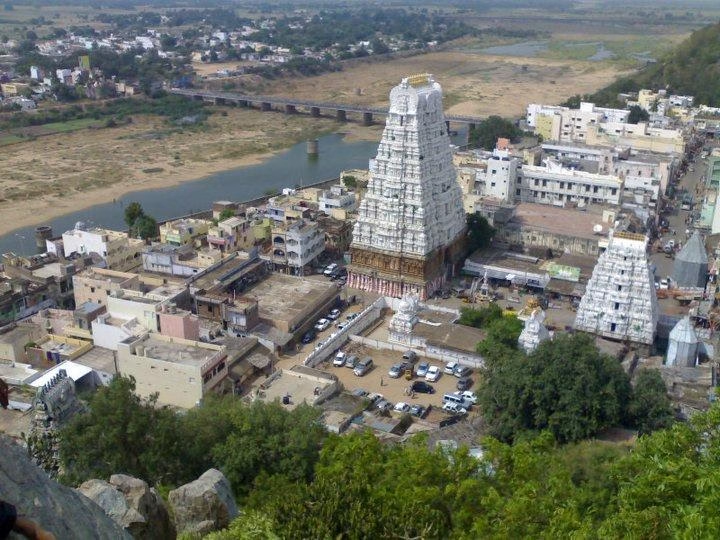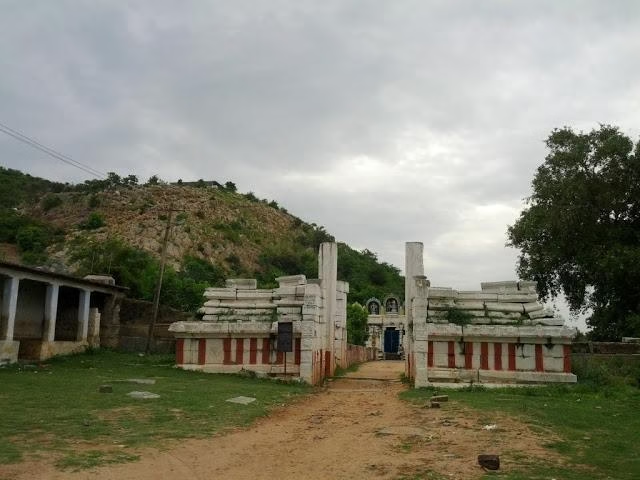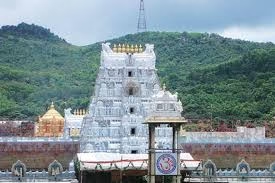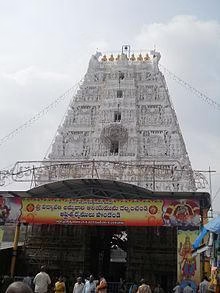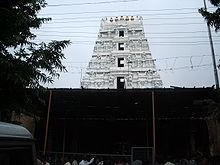Contents
Srikalahasti Temple is located around 36 kms from Tirupati. This temple is among the most famous Shiva temples in South India. The temple is also regarded as Rahu-Ketu kshetra and Dakshina Kasi. In this temple, Lord Shiva in his aspect as Vayu is worshiped as Kalahasteeswara. This temple is considered as the Kailash of the South or Dakshin Kailash and also as Dakshina Kasi
The temple consists of two main deities – Lord Shiva & Parvati. Lord Shiva is in the form of Linga while Parvati is in the standing posture facing North and is called by the name Gnana Prasunamba. Shrine dedicated to Dakshinamurthy is at the entrance of the temple,. He is regarded as the Guru of Lord Shiva. There are many deities and idols dedicated to Venkateswara, Vinayaka, Nataraja, Subhramanya, Surya, Nayanars and also replica Lingas of other famous Shiva temples all over India.
Panchaboothasthalam(Vayu Linga): Lord Shiva is worshiped in the form of Vayu (Wind) Lingam.
Rahu Kethu Kshetra: Kalahasteeswara temple is famous for Rahu Kethu Kshetra. People with Rahu Ketu dosh and Sarpa Dosh or people with problems with planets cann perform Rahu – Kethu Sarpa Dosha Nivarana Puja in this Temple.
Temple History
The inner temple was constructed around 5th century by the Pallav dynasty. The Chola kings and the Vijayanagara kings constructed the outer temple in the 12th century. The entire temple is carved out of the side of a huge stone hill. The mandapam with 100 pillars and the 120 feet (37 m) high main gopuram were constructed by Krishnadevaraya, the Vijayanagara king in 1516.
The temple complex abounds in lithic records (stone inscriptions) of Chola kings such as Rajaditya (regnal years 947-949 CE), Raja Raja Chola (regnal years 985-1014 CE), his son Rajendra Chola (1012-1044 CE), his son Rajadhiraja (1018-1054 CE), Kulottunga I (1070-1120 CE) and Kulotunga III (1178-1218 CE).
Temple Legend
According to Hindu mythology, the elephant or Hasti used to clean the Shiva deity by watering the idol with the help of river-water carried in his trunks and pray for him by placingBilva leaves. The spider or Sri tried to protect the deity from external damage by weaving his web and to provide shelter for the Shiva lingam. The snake or Kala used to place its precious gem on the linga to adorn the lord. In this way, they all worshipped the Vayu linga separately without knowing what the other was doing.
One day, the spider had built a very big and thick web around the deity to protect it from dust and weather while the snake places its gem. The elephant not knowing this and assuming that this form of puja by Sri and Kala is a desecration by the seeming miscreants, pours water on it and cleans it up. This causes a fight between the three. The snake punishes the elephant by entering its trunk and in the process kills itself while the elephant runs amok and hits its trunk and head against the shiva linga. During this struggle, the spider is squashed against the linga by the elephant’s trunk and the elephant dies due to the snake’s poison. Lord Shiva then appeared and gave moksha to all three of them for their selfless devotion. The spider takes rebirth as a great king while the elephant and the snake reaches heaven for satisfying all its karma.
This king continues his good work from his previous birth and builds a variety of temples that seeks to protect the underlying deity with tons of stones. It is interesting to note that all his temples, keep the deity beyond the access of an elephant. In this temple, access to the deity is through a narrow passage in the side of the building that prevents an elephant from extending its trunk over the lord from any side.
Photo by Krishna Kumar Subramanian

